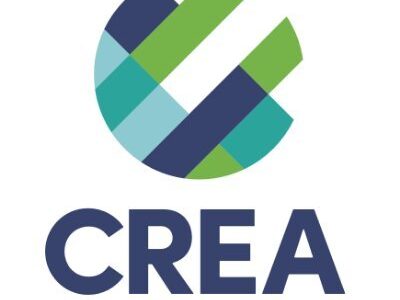Yes, California Can Spend the Cap-and-Trade Auction Proceeds
California’s 2012-13 budget assumed that $500 million of cap-and-trade auction proceeds could be used to offset the cost of greenhouse gas emission reduction programs traditionally supported by the General Fund. Two recent stories, one in the San Francisco Chronicle, the other in ClimateWire, report that since the California Legislative Analyst’s office found only $100 million in such savings, State officials may be legally barred from spending the remaining $400 million. But even if only $100 million is needed to offset existing costs, the State can still use the remaining $400 million — although a budget adjustment may be required to do so.
As described in more detail below, there are three reasons to believe that the State can use all of the auction proceeds: first, the auction proceeds could be used to fund new programs that reduce GHG emissions, not just programs currently supported by the General Fund; second, there are credible arguments that regardless of how the auction proceeds are spent, they do not constitute a “tax,” in which case they could be used for general fund purposes; and third, even if courts find that the auction proceeds must be spent on programs that reduce emissions, unspent funds could likely be loaned to the General Fund.
Funds for New GHG Reduction Programs. The LAO report, titled “The 2013-14 Budget: California’s Fiscal Outlook,” does not conclude that the auction proceeds cannot be spent. Instead, it points out that California’s 2012-13 budget assumed that $500 million in auction proceeds could be used to pay for GHG emission reduction programs currently supported by the General Fund. But since the LAO only found $100 million of such programs, it concluded that the 2012-13 budget was “eroded” by $400 million dollars. That money does not disappear, however, and could potentially be used elsewhere. Even if a court finds the auction proceeds must be spent on program that reduce GHG emissions, the $400 million could still be spent — on new GHG reduction programs.
Funds for General Fund Programs. Both stories report that “fees” must be used for programs related to the collection of the fees. While that statement is true, the auction proceeds may not be “fees.” As Dan and I previously reported, Proposition 13 requires a two-thirds vote of the legislature for “any changes in State taxes enacted for the purpose of increasing revenues.” Since AB 32 was approved by a majority vote, but not by two-thirds vote, the cap-and-trade program may be at risk if the auction proceeds are found to constitute a “tax” (as opposed to a “fee”). There are, however, at least three credible arguments that the auction revenues are not “taxes” subject to Proposition 13. Very briefly, those arguments are:
(1) Unlike other taxes and fees, the cap-and-trade program was not “enacted for the purpose of increasing revenues,” thus the super-majority requirements of Proposition 13 do not apply.
(2) The allowances constitute a governmental privilege like a development fee or a special assessment rather than a “tax.”
(3) If the proceeds are spent to reduce GHG emissions, the auction proceeds are a valid “regulatory fee” consistent with the requirements of Sinclair Paint, the leading California Supreme Court case in this area.
If a court relies on either of the first two arguments, the state will have flexibility in how it uses the auction proceeds, thus the auction proceeds could be used to offset other General Fund expenses. The most conservative approach, however, would be to use the auction proceeds to reduce GHG emissions, consistent with the Sinclair Paint regime. Doing so would maximize the number of arguments in support of the proposition that the auction proceeds are not a “tax” under Proposition 13.
Funds Used as a Loan to the General Fund. Even if a court holds that the proceeds must be spent on programs that reduce GHG emissions, money that is not spent for such purposes could be loaned from the Greenhouse Gas Reduction Fund to the General fund. Specifically, California Government Code Section 16310 authorizes loans from Special Funds (funds “legally restricted for particular functions or activities”) to the General Fund (“moneys that are not required by law to be deposited into any other fund”). The conditions under which funds can be loaned are (i) the General Fund must be exhausted, (ii) the loan cannot interfere with the object for which the Special Fund was created, and (iii) the money must be returned as soon as there are sufficient monies in the General Fund to return them. In the short term, at least, those conditions are likely to be satisfied. Thus even if the auction proceeds must ultimately be spent on programs that reduce GHG emissions, they could be loaned to the General Fund in the short term.
It’s difficult to see the Governor or the Legislature leaving $400 million unspent, and there is no reason for them to do so.
Reader Comments
2 Replies to “Yes, California Can Spend the Cap-and-Trade Auction Proceeds”
Comments are closed.







I have wondered whether this system can truly produce no new carbon emissions (no net gain) or are the benefits theoretical (actual tracking versus theoretical, enforcement, etc)? I like the idea the intention is to link carbon reductions with a new market system as an incentive. If the system cant achieve the intended goals then its usefulness will lose value within society and exist like any other marketplace – exist for the speculators and investors.
I have wondered whether this system can truly produce no new carbon emissions (no net gain) or are the benefits theoretical (actual tracking versus theoretical, enforcement, etc)? I like the idea the intention is to link carbon reductions with a new market system as an incentive. If the system cant achieve the intended goals then its usefulness will lose value within society and exist like any other marketplace – exist for the speculators and investors.